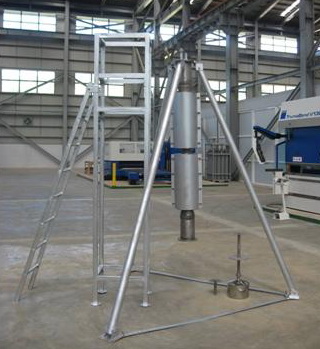On 17 September Burma took the long awaited step of signing a new agreement with the International Atomic Energy Agency, the IAEA. Burma promised to do this in late 2012 and has now followed through on the occasion of the IAEA General Conference in Vienna. The new agreement is called an Additional Protocol and it provides for more access for IAEA to any declared activities in Burma and removes obsolete provisions of an older agreement. The General Conference is a traditional time for states to make important announcements and Burma has continued that trend.
This is a very welcome development, one that is consistent with many positive signs that Burma is really trying to change its image. Many problems remain in Burma: an ethnic war in the north and oppression of the Rohingya, but this is greatly offset by the release of political prisoners, fairer elections and opening of the country to the rest of the world. As difficult as times remain, one would have to be a real miser not to acknowledge there is change, positive change and hopeful change.
Allegations of past hidden nuclear activities in Burma are a small but troubling remainder of the former military government. If there were undisclosed nuclear activities the current government can quickly dispel any doubts.
Unfortunately the signing of the Additional Protocol is but the first of three steps in the process of opening up Burma’s nuclear secrets, and diplomatic bureaucracy could add many more years before Burma even begins to comply.
Burma must now ratify the president’s signature in the legislature. The 10-month delay between the announcement of intent to sign and the actual signature gives some idea how slow this process can be. Then Burma must put in place an internal administrative structure. This structure needs to poll all stakeholders in Burma who have any nuclear materials or activities and then produce declarative reports for IAEA to investigate and verify. This process can take many years. We should not have to wait so long.
Burma can unilaterally cut the red tape itself. On the authority of the president, Burma should immediately inform the IAEA that they are ready to allow certain inspections immediately to clear up allegations from defectors and analysts that have been supported by documentary evidence. Burma should immediately grant access to the small mine and conversion plant at Thabeikkyin and a number of military facilities in the area which are well known to the IAEA and other analysts.
Secondly, Burma should grant immediate access to two machine tools factories that have been implicated in nuclear chemical industry work (see picture). As part of this access, they need to provide access to chemical equipment that has been extensively photographed and described here in the pages of the Democratic Voice of Burma and elsewhere. This access needs to be granted no matter where the equipment is located today and should include access to manufacturing drawings, data and current use. The equipment is very well-documented and it clearly exists.
[related]
Unrestricted access will either silence critics of Burma or give the regime a chance to explain itself. Finally, there are several other sites related to nuclear development that are not so well known and access should be given to those sites as part of the package.
All of these activities could be carried out in a few weeks from now if all parties cooperate. Then the more routine part of establishing a normal nuclear materials verification regime could begin.
Why should this be done now? There is a common misunderstanding that the Additional Protocol with the IAEA, ratified and brought into force allows “snap inspections”, “anywhere and anytime” in the state.This is simply not true.The Protocol only allows short notice inspections of declared sites in Burma, and Naypyidaw has already said they have no activities or sites to declare.It is possible that we could wait years for Burma to reach the point of making a formal declaration of activities, and then state simply: “We have nothing to declare.”Then the waiting will be for naught because the IAEA can only ask for access to declared activities and there are none.
True, there are arrangements for highly intrusive “special inspections”. Such inspections would require military force if the state does not voluntarily agree and a further stalemate could go on for years as it has in some other countries. The best way to avoid this dilemma is for Burma to volunteer to clear the issues immediately and cooperatively.
Burma has taken the first step and should be heartily congratulated and encouraged to take the next steps as quickly as possible and not delay from eight to 10 years like several other ASEAN member states. The IAEA and others can help this process. But the delay from signing intent to actual signing is a worrisome indicator that the president does not control the consultative process or at least gives it a low priority.
The international community should give Burma clear signs that a voluntary opening of key suspect sites is in its best interest and give Burma and the IAEA every assistance to close the books on this chapter once and for all.
For more background: https://www.dvb.no/news/expert-says-burma-%E2%80%98planning-nuclear-bomb%E2%80%99/9527
Dr Robert Kelley is a former Los Alamos weapons scientist, and was an IAEA director from 1992 to 1993, and again from 2001 to 2005. He has conducted weapons inspections in Libya, Iraq, and South Africa, and compliance inspections in Egypt, Turkey, South Korea, Taiwan, Syria, Tanzania, Pakistan, India and Congo, among others.
The views expressed in this article are the author’s and do not reflect DVB editorial policy.



